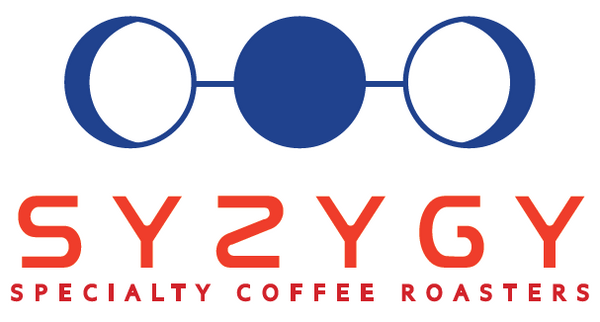
The Latte: A Global Coffee Staple
Share
A Global Staple: The Evolution and Popularity of the Latte
Understanding the Latte: A Global Perspective
When you stroll into a coffee shop anywhere in the globe, the latte will likely be a prominent feature on the menu. This milk-based coffee drink has found favor with countless coffee lovers around the world. Despite its popularity, the latte's composition varies based on geographical location, including throughout Europe. Tracing its origins back to 17th-century Europe, it wasn't until the late 19th century that its modern name emerged.
But why does this drink enjoy such universal acclaim? What's its story? We dove deep into the world of coffee to learn more.
The Latte's Journey: A Walk Through History
From as early as the 1600s, Europeans have been pairing coffee and milk in their homes and coffee houses. The latte's various regional siblings include Italy's caffè latte, Germany's Milchkaffee, Spain's café con leche, and France's café au lait. But the term "latte" as we know it for a milk-based coffee didn't enter the lex' until the 1860s.
The evolution of the modern latte is largely a result of American influence. After World War II, as espresso machines began to cross the Atlantic from Italy, Americans started recreating the coffee they had tasted in Italy. The native palate found the Italian espresso a bit too robust, leading to the addition of milk to temper the strength.
Fast forward to the late 1980s, the latte found a resurgence in popularity in Seattle before spreading across the country during the 1990s. The mellow, less potent flavor of the coffee made it an easy sell not just in the U.S., but also globally.
The Latte in Contemporary Times
The latte, depending on where you are, may resemble a flat white or a cappuccino. However, it's often larger than these beverages, typically ranging between 10oz to 12oz, whereas a cappuccino usually sits at around 6oz.
One could describe a latte as a cappuccino with extra milk. Generally, a cappuccino has a microfoam layer of at least 1cm, while a latte or flat white has around 0.5cm. This difference plays a significant role in the beverage's texture, as less microfoam results in a thinner yet creamy consistency.
Latte art, a feature of modern lattes, is a given in most coffee shops today. Though the concept of latte art has been around for centuries, it gained significant popularity during the 1980s. Presently, numerous latte art patterns, including the tulip, heart, and rosette, are recognizable to coffee enthusiasts.
The latte holds a special place in the specialty coffee industry due to its popularity and the potential for variations. Depending on the location, you might find it listed as caffè latte, café au lait, or café con leche, with options for iced variants or added syrups. You can have a latte anywhere in the world and always expect something different.
The Latte's Diverse Avatar: A Look at Variations
Despite variations based on geographical location, some elements of the latte remain constant. Traditionally, a latte is prepared by steaming milk to create microfoam, then pouring the milk into a glass followed by the addition of espresso. This method results in a layer of dry foam on top with liquid milk beneath. This technique differs from the latte art steaming approach, which employs a 'wetter' microfoam.
The traditional method, however, doesn't lend itself well to latte art due to the foam's thickness. But nowadays, baristas typically pour steamed milk onto the espresso when making a latte, a technique favored for its suitability to latte art, a mainstay of the specialty coffee sector.
In a latte, milk takes center stage. Hence, it's crucial for baristas to master steaming and pouring techniques to deliver the best possible drink. Poor quality microfoam can make a latte feel thin or diluted.
The Art of Making a Latte
The latte, like the cappuccino or flat white, begins with an espresso base. The ratio is usually1:2, depending on the coffee. Compared to a flat white, a latte has more foam but less than a cappuccino. This balance between espresso and milk makes it an ideal choice for many consumers.
A latte it's typically larger than a flat white or cappuccino due to the extra milk added to the espresso, resulting in a sweeter, milkier beverage.
The intensity of the espresso plays a significant role in balancing the flavors. To ensure the coffee's flavor shines through, many coffee shops use two shots of espresso in their lattes.
Today's lattes, particularly those prepared in specialty coffee shops, are usually at least 8oz, a size that allows the espresso to balance the milk's sweetness while still providing a milky beverage.
Coffee selection also matters when preparing a latte. Medium to dark roast profiles, especially coffees with chocolatey and nutty tasting notes, work best. Coffees from regions like Brazil, Guatemala, and Colombia, known for their chocolate, nut, and caramel flavors, are generally excellent choices for lattes.
Conclusion: The Latte's Global Appeal
The latte, along with other milk-based coffee drinks, has varied preparations around the world. Over the years, it has established itself as a mainstay of the global coffee industry, enjoying unwavering popularity.
Regardless of its preparation, one certainty remains: the latte will continue to grace coffee shop menus for years to come.
